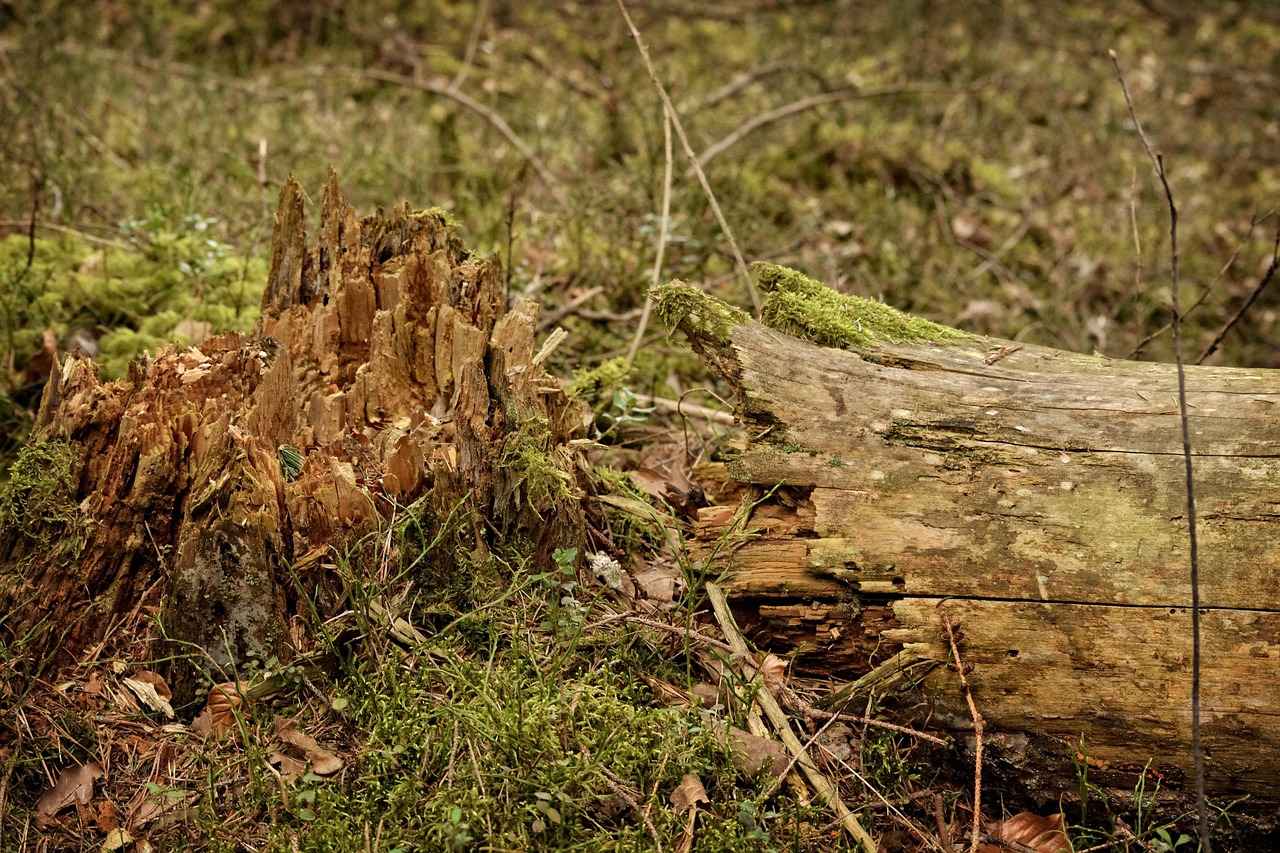This article serves as a comprehensive guide on the process of rebuilding a Quadrajet carburetor. It outlines the necessary steps, tools, and expert tips to ensure optimal performance and longevity of this essential component in your vehicle.
The Quadrajet carburetor, designed by Rochester Products, is known for its unique four-barrel design, allowing it to provide excellent fuel efficiency and performance across various driving conditions. Its versatility makes it a popular choice among automotive enthusiasts, especially for classic cars and high-performance applications.
Rebuilding a Quadrajet carburetor can significantly enhance your vehicle’s performance, fuel efficiency, and overall reliability. Common issues such as fuel leaks, poor acceleration, and rough idling often necessitate a rebuild. Restoring this component not only improves functionality but also extends its lifespan.
- Fuel Leaks: Often caused by worn gaskets or faulty seals.
- Poor Acceleration: Can result from clogged jets or incorrect adjustments.
- Rough Idling: Indicates potential issues with the idle circuit or air-fuel mixture.
Key indicators that suggest it’s time for a rebuild include:
- Frequent stalling or hesitation during acceleration.
- Visible fuel leaks around the carburetor.
- Inconsistent engine performance.
Having the right tools is crucial for a successful rebuild. Essential tools include:
- Basic Hand Tools: Screwdrivers, wrenches, and pliers for disassembly.
- Specialized Tools: A carburetor rebuild kit, vacuum gauge, and cleaning supplies.
To effectively disassemble and reassemble the carburetor, you will need:
- Flat and Phillips screwdrivers- Socket set- Pliers- Torque wrench
Investing in specialized tools can enhance your rebuilding experience. A carburetor rebuild kit typically includes gaskets, jets, and other essential components. A vacuum gauge is also vital for ensuring proper adjustments during the rebuild process.
The rebuilding process involves several critical steps:
Begin by carefully disassembling the carburetor to avoid damaging any components. Document each step to ensure proper reassembly.
Thorough cleaning is essential. Use a carburetor cleaner and a soft brush to remove deposits. Inspect all components for wear and damage, replacing any faulty parts as needed.
After rebuilding, it’s essential to make final adjustments and conduct tests to ensure everything operates smoothly. Key adjustments include:
Correctly adjusting the idle speed and air-fuel mixture is vital for achieving optimal performance. Follow the manufacturer’s specifications for precise settings.
Once adjustments are made, test the carburetor under various conditions to evaluate its performance. Pay attention to throttle response and engine smoothness, making any necessary tweaks to achieve desired results.
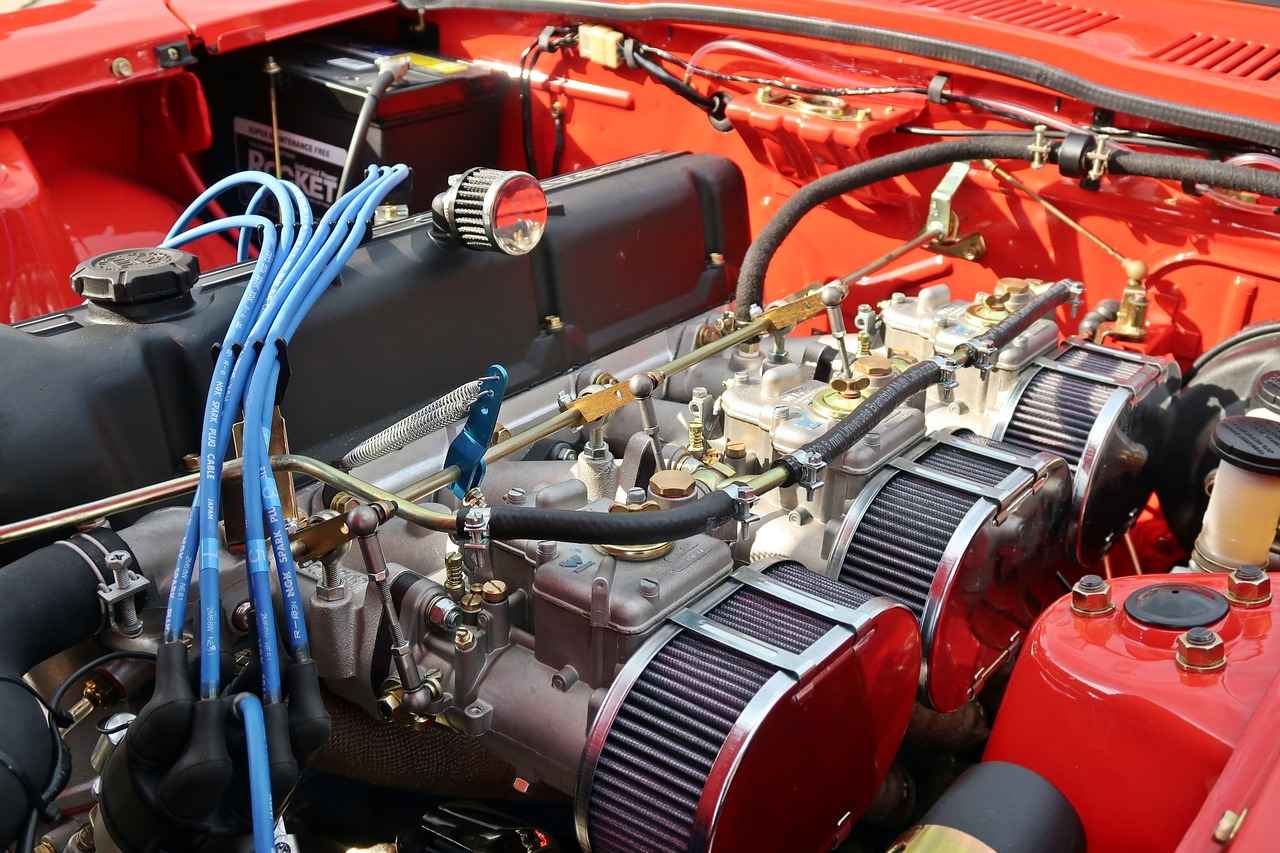
What is a Quadrajet Carburetor?
Understanding the Quadrajet carburetor is essential for anyone looking to delve into the world of automotive maintenance and performance tuning. This unique carburetor design, created by Rochester Products, has gained popularity among automotive enthusiasts for its innovative features and versatility. In this section, we will explore the distinctive characteristics of the Quadrajet carburetor and why it remains a favored choice for both classic and modern vehicles.
The Quadrajet carburetor is renowned for its versatile design that combines the benefits of both a two-barrel and a four-barrel carburetor. This dual functionality allows for optimal fuel delivery across a wide range of engine speeds and loads. The primary barrels handle low-speed operation, while the secondary barrels kick in during high-demand situations, providing a seamless transition that enhances performance.
- Adjustable Main Jets: The Quadrajet features adjustable main jets, allowing for fine-tuning of fuel delivery to match specific engine requirements.
- Variable Venturi Design: Its variable venturi design enables the carburetor to adapt to changing airflows, improving efficiency and throttle response.
- Integrated Choke System: The built-in choke system simplifies cold starts, enhancing drivability in various conditions.
- Easy Rebuilding: The carburetor’s design allows for straightforward disassembly and rebuilding, making it accessible for DIY enthusiasts.
The Quadrajet carburetor is favored not only for its unique features but also for its performance potential. Many enthusiasts appreciate its ability to deliver excellent fuel economy while providing the power needed for spirited driving. Moreover, the availability of aftermarket parts and rebuild kits ensures that maintaining and upgrading a Quadrajet is feasible for most car owners.
This carburetor has been widely used in various vehicles, particularly in the Chevrolet and Pontiac lineups during the 1970s and 1980s. Its adaptability makes it suitable for a range of engines, from small-block V8s to larger power plants, further solidifying its status as a go-to choice for performance modifications.
For those involved in performance tuning, the Quadrajet carburetor offers numerous advantages. Its ability to handle a broad spectrum of fuel mixtures and airflows allows tuners to extract maximum horsepower while maintaining efficiency. Additionally, the carburetor’s design simplicity means that even those with limited mechanical experience can successfully rebuild and modify it.
In summary, the Quadrajet carburetor stands out due to its innovative design, versatility, and ease of maintenance. These qualities not only make it a popular choice among automotive enthusiasts but also ensure its relevance in today’s performance tuning landscape. Understanding its features and functionality is crucial for anyone looking to optimize their vehicle’s performance.
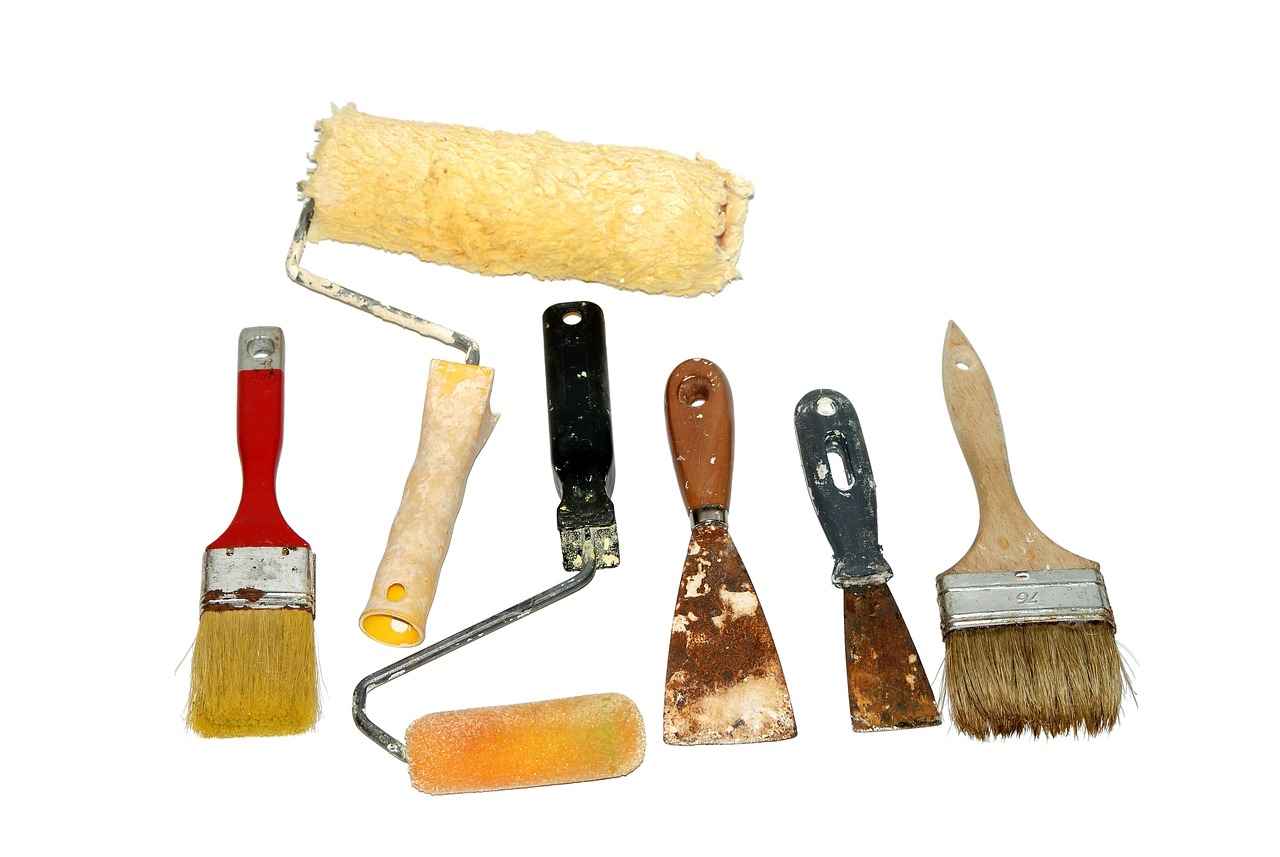
Why Rebuild a Quadrajet Carburetor?
Rebuilding a Quadrajet carburetor is not just a maintenance task; it is a significant upgrade that can lead to improved performance, enhanced fuel efficiency, and increased reliability. Understanding the reasons behind a rebuild is essential for any automotive enthusiast looking to maximize their vehicle’s potential. This section delves into the common issues that necessitate a rebuild and the numerous benefits that come with restoring this vital component.
Quadrajet carburetors, known for their versatility and performance, can encounter several problems over time. Some of the most frequent issues include:
- Fuel Leaks: Often caused by worn gaskets or faulty seals, fuel leaks can lead to decreased performance and safety hazards.
- Poor Acceleration: This can result from clogged jets or improper adjustments, affecting the vehicle’s responsiveness.
- Rough Idling: A poorly functioning carburetor can cause uneven idling, making the vehicle feel unstable at low speeds.
Neglecting these problems can lead to more severe complications down the road. For instance, a fuel leak not only wastes fuel but can also create a fire hazard. Similarly, poor acceleration can affect your driving experience and potentially lead to engine damage if left unchecked. By rebuilding your Quadrajet carburetor, you can:
- Restore Optimal Performance: A rebuild can significantly improve throttle response and overall engine performance.
- Enhance Fuel Efficiency: By addressing issues like clogged jets, you can improve fuel economy, saving money at the pump.
- Increase Reliability: A well-maintained carburetor can lead to fewer breakdowns and a more enjoyable driving experience.
Rebuilding your Quadrajet carburetor offers numerous advantages:
- Cost-Effectiveness: Instead of purchasing a new carburetor, a rebuild can save you money while providing similar benefits.
- Customization: Rebuilding allows you to modify settings to suit your driving style, enhancing your vehicle’s performance.
- Longevity: Regular maintenance, including rebuilding, can extend the life of your carburetor and engine.
To achieve the best results, it’s crucial to follow a systematic approach during the rebuild process. Here are some tips:
- Use Quality Parts: Invest in a reputable rebuild kit to ensure all components are reliable and durable.
- Follow a Detailed Guide: Utilize comprehensive resources or guides to navigate the rebuilding process effectively.
- Perform Thorough Inspections: Check each component for wear and tear, ensuring all parts are functioning correctly before reassembly.
In summary, rebuilding a Quadrajet carburetor is a vital step in maintaining your vehicle’s performance and efficiency. By understanding the common issues that arise and the benefits of restoration, you can make informed decisions that enhance your driving experience.
Common Problems with Quadrajet Carburetors
When it comes to maintaining the performance of classic vehicles, understanding the Quadrajet carburetor is essential. This component, renowned for its versatility and efficiency, can encounter several issues over time. Recognizing these problems is crucial to determine when a rebuild is necessary. Below, we delve into the common problems associated with Quadrajet carburetors, ensuring you are well-informed about what to look out for.
- Fuel Leaks: One of the most prevalent issues is fuel leakage, which can arise from various sources such as worn gaskets, deteriorated seals, or cracks in the carburetor body. Fuel leaks not only lead to inefficient fuel usage but can also pose serious safety hazards.
- Poor Acceleration: If your vehicle struggles to accelerate smoothly, it may be due to clogged jets or incorrect adjustments. These issues can hinder the carburetor’s ability to deliver the right fuel-air mixture, resulting in sluggish performance.
- Rough Idling: A Quadrajet that idles roughly can indicate several underlying problems, including vacuum leaks or improper tuning. This can lead to an unpleasant driving experience and reduced engine efficiency.
- Stalling: Frequent stalling can be a sign of inadequate fuel delivery, often caused by a malfunctioning accelerator pump or blocked fuel passages. This issue can be particularly frustrating and dangerous if it occurs while driving.
- Excessive Fuel Consumption: If you notice a significant drop in fuel efficiency, it may be due to an overly rich fuel mixture or other tuning issues. This not only affects your wallet but also increases emissions.
Diagnosing these problems requires careful observation and testing. Here are some effective methods:
- Check for visible leaks around the carburetor and fuel lines.
- Monitor engine performance during acceleration; pay attention to any hesitations or stutters.
- Listen for any unusual sounds during idling, which may indicate rough operation.
- Keep an eye on fuel consumption and compare it with the manufacturer’s specifications.
Understanding the root causes of these issues can help in implementing effective solutions:
- Wear and Tear: Over time, components within the carburetor can wear out, leading to leaks and performance issues.
- Improper Maintenance: Lack of regular cleaning and adjustments can result in clogged jets and other malfunctions.
- Environmental Factors: Exposure to moisture and contaminants can deteriorate gaskets and seals, leading to fuel leaks.
By being aware of these common problems and their causes, you can better assess the condition of your Quadrajet carburetor. Regular inspections and maintenance can prevent these issues from escalating, ensuring your vehicle runs smoothly and efficiently.
Fuel Leaks and Their Causes
Fuel leaks in a Quadrajet carburetor can lead to significant performance issues and safety hazards. Understanding the root causes of these leaks is crucial for effective repairs and preventing future occurrences. This section delves into the common factors that contribute to fuel leaks, emphasizing the importance of addressing them promptly.
Fuel leaks can arise from a variety of sources within the carburetor. The most common causes include:
- Worn Gaskets: Over time, gaskets can degrade due to heat and exposure to fuel, leading to cracks and leaks.
- Faulty Seals: Seals are designed to prevent fuel from escaping the carburetor. If they are worn or improperly installed, leaks can occur.
- Corrosion: Metal components can corrode, especially in older carburetors, creating gaps where fuel can escape.
- Improper Assembly: If the carburetor is not assembled correctly after a rebuild, it can lead to misalignment and leaks.
Recognizing the signs of fuel leaks is essential for maintaining a healthy carburetor. Look for:
- Fuel Odor: A strong smell of gasoline around the carburetor is a clear indication of a leak.
- Wet Spots: Visible fuel stains or wet spots around the carburetor suggest a leak.
- Engine Performance Issues: If the engine is running poorly or stalling, it may be due to a fuel leak affecting the air-fuel mixture.
Preventing fuel leaks requires regular maintenance and attention to detail. Here are some effective strategies:
- Routine Inspections: Regularly check gaskets and seals for wear and replace them as needed.
- Use Quality Parts: When rebuilding your carburetor, always opt for high-quality gaskets and seals to ensure longevity.
- Proper Assembly: Follow manufacturer guidelines during assembly to ensure all components are fitted correctly.
- Regular Cleaning: Keep the carburetor clean to prevent buildup that could lead to leaks or performance issues.
If you discover a fuel leak, it is crucial to address it immediately. Here are the steps to take:
- Turn Off the Engine: Safety first! Ensure the engine is turned off and cool before proceeding.
- Identify the Source: Carefully inspect the carburetor to pinpoint where the leak is coming from.
- Replace Worn Parts: If gaskets or seals are found to be the culprits, replace them with new ones.
- Reassemble and Test: After making repairs, reassemble the carburetor and test the vehicle to ensure the leak is resolved.
By understanding the causes of fuel leaks and taking proactive measures, you can ensure your Quadrajet carburetor operates efficiently and reliably. This knowledge not only enhances performance but also contributes to the overall safety of your vehicle.
Poor Acceleration and Performance Issues
Poor acceleration in a vehicle equipped with a Quadrajet carburetor can significantly impact driving experience and overall performance. Understanding the underlying causes of this issue is essential for effective troubleshooting and rebuilding. In this section, we will delve into the factors contributing to poor acceleration, such as clogged jets and incorrect adjustments, and provide insights on what to check during a rebuild.
When a vehicle struggles to accelerate, it can often be traced back to the carburetor’s performance. Two of the most common culprits are:
- Clogged Jets: Over time, fuel residue, dirt, and other contaminants can accumulate in the jets, restricting fuel flow. This can lead to a lean fuel mixture, resulting in sluggish acceleration and poor engine response.
- Incorrect Adjustments: The Quadrajet carburetor requires precise tuning for optimal performance. If the float level is set incorrectly, or if the idle mixture screws are not adjusted properly, the engine may not receive the correct air-fuel ratio, leading to performance issues.
When jets become clogged, they inhibit the proper flow of fuel into the engine. This can result in:
- Increased Engine Load: A clogged jet forces the engine to work harder to draw in fuel, leading to increased strain and potential overheating.
- Reduced Power Output: Insufficient fuel delivery means reduced power, making it difficult for the vehicle to accelerate smoothly.
- Engine Stalling: In severe cases, clogged jets can cause the engine to stall, particularly during acceleration or when climbing hills.
During a rebuild, it is crucial to verify that all adjustments are correctly set. Key areas to focus on include:
- Float Level: Ensure that the float is adjusted to the manufacturer’s specifications. An incorrect float level can lead to either flooding or starvation of the engine.
- Idle Mixture Screws: Properly adjusting the idle mixture screws can improve throttle response and overall performance. A too-rich or too-lean mixture can severely affect acceleration.
- Throttle Linkage: Check the throttle linkage for any binding or misalignment. Proper functioning of the throttle linkage is essential for responsive acceleration.
Addressing poor acceleration involves a systematic approach:
1. Disassemble the carburetor and inspect for clogged jets.2. Clean jets using a carburetor cleaner and compressed air.3. Reassemble the carburetor and check all adjustments.4. Test the vehicle to assess improvements in acceleration.
By following these steps, you can ensure that your Quadrajet carburetor is functioning optimally, greatly enhancing your vehicle’s performance.
In summary, poor acceleration in Quadrajet carburetors can often be traced back to clogged jets or incorrect adjustments. By understanding these factors and taking the necessary steps during the rebuild process, you can restore your vehicle’s performance and enjoy a smoother, more powerful ride.
Signs Your Quadrajet Needs Rebuilding
Recognizing when your Quadrajet carburetor needs rebuilding is critical for maintaining your vehicle’s performance. The following indicators can help you identify potential issues before they escalate into more serious problems.
- Unusual Engine Performance: If you notice your engine hesitating during acceleration or experiencing rough idling, this may indicate that your carburetor is not functioning optimally. Issues like clogged jets or improper adjustments can severely affect performance.
- Fuel Leaks: A clear sign that your Quadrajet needs attention is the presence of fuel leaks. These leaks can arise from worn gaskets or faulty seals, leading to potential fire hazards and decreased fuel efficiency.
- Poor Fuel Economy: If you find that your vehicle is consuming more fuel than usual, it might be time for a rebuild. An inefficient carburetor can lead to excessive fuel consumption, impacting your wallet and the environment.
- Difficulty Starting: Struggling to start your engine can be a direct result of a malfunctioning carburetor. If the carburetor is not delivering the correct air-fuel mixture, it can lead to hard starts or stalling.
- Visible Damage: Inspecting your carburetor for any visible signs of damage, such as cracks or corrosion, is essential. These physical indicators often suggest that a rebuild is necessary to restore functionality.
- Inconsistent Idle Speed: If your engine’s idle speed fluctuates unexpectedly, it can indicate that the carburetor is not maintaining the proper air-fuel ratio. This inconsistency can lead to further complications if not addressed promptly.
By being aware of these key indicators, you can take timely action to rebuild your Quadrajet carburetor, ensuring that your vehicle remains reliable and performs at its best. Regular maintenance and inspections can help catch these issues early, preventing costly repairs down the line. Always consult with a professional or refer to reliable resources when in doubt about your carburetor’s condition.
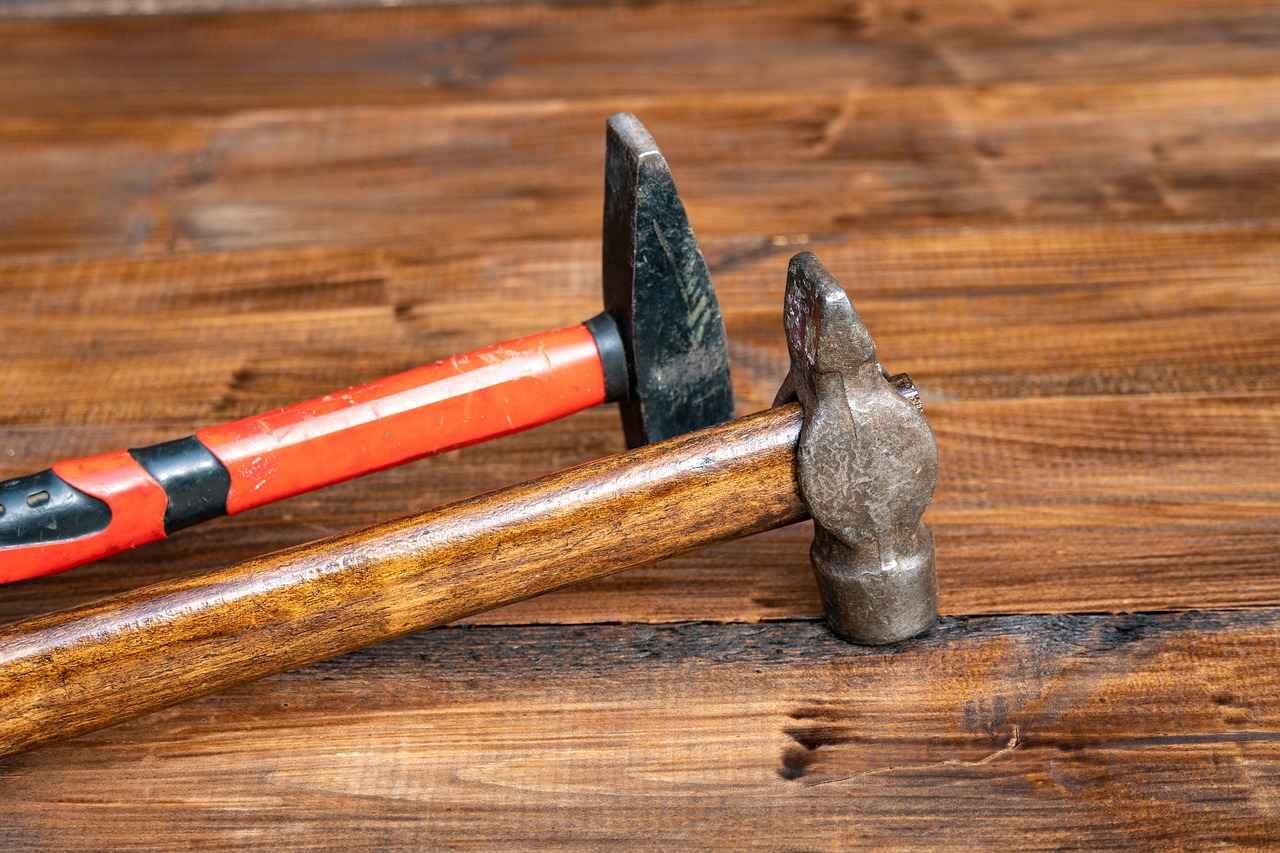
Essential Tools for Rebuilding a Quadrajet Carburetor
When it comes to successfully rebuilding a Quadrajet carburetor, having the right tools is absolutely critical. This section will provide you with a comprehensive list of the essential tools and equipment required for the task, ensuring that you are fully prepared for the rebuilding process.
Using the appropriate tools not only makes the job easier but also helps to prevent damage to delicate components. Proper tools ensure that each step of the rebuild is executed with precision, which is vital for achieving optimal performance.
Before diving into the rebuild, it’s essential to gather a set of basic hand tools. Here’s a list of the most necessary items:
- Screwdrivers: A set of flathead and Phillips screwdrivers is crucial for removing screws and components.
- Wrenches: A set of metric and standard wrenches will help you tackle various nuts and bolts.
- Pliers: Needle-nose pliers can assist in gripping small parts, while regular pliers can be used for general tasks.
- Socket Set: A socket set can make removing larger bolts much easier and quicker.
In addition to basic hand tools, certain specialized tools are essential for a thorough and effective rebuild:
- Carburetor Rebuild Kit: This kit typically includes gaskets, O-rings, and other necessary components that wear out over time.
- Vacuum Gauge: A vacuum gauge is invaluable for diagnosing issues and making precise adjustments during the rebuild.
- Torque Wrench: This tool ensures that bolts are tightened to the manufacturer’s specifications, preventing damage and ensuring proper sealing.
- Caliper: A caliper can be used to measure the dimensions of various components to ensure they are within specified tolerances.
Having the right cleaning supplies is also essential for a successful rebuild:
- Carburetor Cleaner: This specialized cleaner is designed to dissolve fuel residues and varnish buildup.
- Brush Set: A set of small brushes will help you clean intricate parts effectively.
- Shop Towels: These are necessary for drying parts and wiping down surfaces.
Lastly, don’t forget to prioritize safety while working:
- Safety Glasses: Protect your eyes from debris and cleaning chemicals.
- Gloves: Wearing gloves will protect your hands from harmful solvents and sharp components.
By gathering these essential tools and equipment before starting your Quadrajet carburetor rebuild, you can ensure a smoother and more efficient process. Being well-prepared not only enhances your confidence but also significantly increases the chances of achieving a successful rebuild.
Basic Hand Tools Required
When embarking on the journey of rebuilding a Quadrajet carburetor, having the right tools at your disposal is crucial. Among these, basic hand tools such as screwdrivers and wrenches play a pivotal role in the disassembly and reassembly processes. This section outlines the specific tools you will need for each step, ensuring a smooth and efficient rebuild.
To begin with, you will require a few basic hand tools that are indispensable for disassembling your carburetor:
- Screwdrivers: A set of both flathead and Phillips screwdrivers is essential. These will help you remove screws that hold various components together.
- Wrenches: A variety of wrenches, including both standard and metric sizes, are necessary for loosening and tightening bolts and nuts.
- Socket Set: A socket set can provide more leverage and access to hard-to-reach areas compared to traditional wrenches.
- Pliers: Needle-nose pliers are particularly useful for gripping small parts and removing clips.
Once disassembly is complete, the next step involves cleaning and inspecting the components:
- Wire Brush: A wire brush is effective for cleaning metal surfaces and removing carbon buildup.
- Cleaning Solvent: Use a carburetor cleaner or a suitable solvent to ensure all parts are free from dirt and debris.
- Soft Cloths: Microfiber or lint-free cloths are ideal for wiping down components without leaving residue.
After cleaning, it’s time to reassemble your carburetor. Here are some tools that can assist in this process:
- Torque Wrench: This tool ensures that you apply the correct amount of torque to bolts, preventing damage to components.
- Gasket Scraper: A gasket scraper helps in removing old gaskets and ensuring a clean surface for new ones.
- Thread Sealant: A thread sealant can be beneficial for ensuring that screws and bolts remain secure and leak-free.
While basic hand tools are essential, some additional tools can enhance your rebuilding experience:
- Vacuum Gauge: This tool can help you fine-tune the carburetor’s performance by measuring vacuum levels.
- Carburetor Rebuild Kit: A rebuild kit typically includes new gaskets, seals, and other components necessary for the rebuild.
In summary, having the right basic hand tools is critical for successfully rebuilding your Quadrajet carburetor. From screwdrivers to specialized tools, each plays a unique role in ensuring that your carburetor functions optimally. By being well-prepared with the appropriate tools, you can tackle each step of the rebuild with confidence and precision.
Specialized Tools for Precision Work
When embarking on the journey of rebuilding a Quadrajet carburetor, having the right tools is essential for achieving optimal results. Among these tools, certain specialized instruments stand out for their ability to enhance precision and efficiency during the rebuilding process. This section delves into the significance of tools like a carburetor rebuild kit and a vacuum gauge, explaining their roles and how to utilize them effectively.
A carburetor rebuild kit is a collection of essential components designed to restore your carburetor to its original performance. Typically, these kits include gaskets, O-rings, needle and seat assemblies, and other critical parts that may wear out over time. Using a rebuild kit ensures that all necessary components are replaced, minimizing the risk of future leaks and performance issues.
A vacuum gauge is an invaluable tool that helps diagnose engine performance issues. During the rebuilding process, it allows you to measure the vacuum levels within the carburetor, providing insights into how well the engine is breathing. By using a vacuum gauge, you can fine-tune adjustments for optimal air-fuel mixture, which is crucial for performance and efficiency.
- Step 1: Begin by removing the old components from the carburetor. Ensure that you are working in a clean environment to avoid contamination.
- Step 2: Compare the old parts with the new ones in the rebuild kit to confirm compatibility.
- Step 3: Install the new gaskets and seals carefully, ensuring a snug fit to prevent leaks.
- Step 4: Reassemble the carburetor, paying close attention to the order of components to avoid misalignment.
To use a vacuum gauge, follow these steps:
- Connect the Gauge: Attach the vacuum gauge to a vacuum port on the carburetor or intake manifold.
- Start the Engine: With the engine running, observe the gauge reading. A steady reading indicates a healthy engine.
- Adjust Settings: If the reading fluctuates or is lower than expected, adjustments may be necessary. This could involve tuning the carburetor or checking for leaks.
Utilizing specialized tools like a carburetor rebuild kit and a vacuum gauge not only enhances the rebuilding process but also contributes to the longevity and performance of your vehicle. These tools provide the precision needed to ensure that every component functions harmoniously, ultimately resulting in improved fuel efficiency and smoother operation.
In summary, investing in specialized tools is a crucial step in the carburetor rebuilding process. By employing a carburetor rebuild kit and a vacuum gauge, you equip yourself with the means to perform a thorough and effective rebuild, ensuring your Quadrajet carburetor operates at its best.
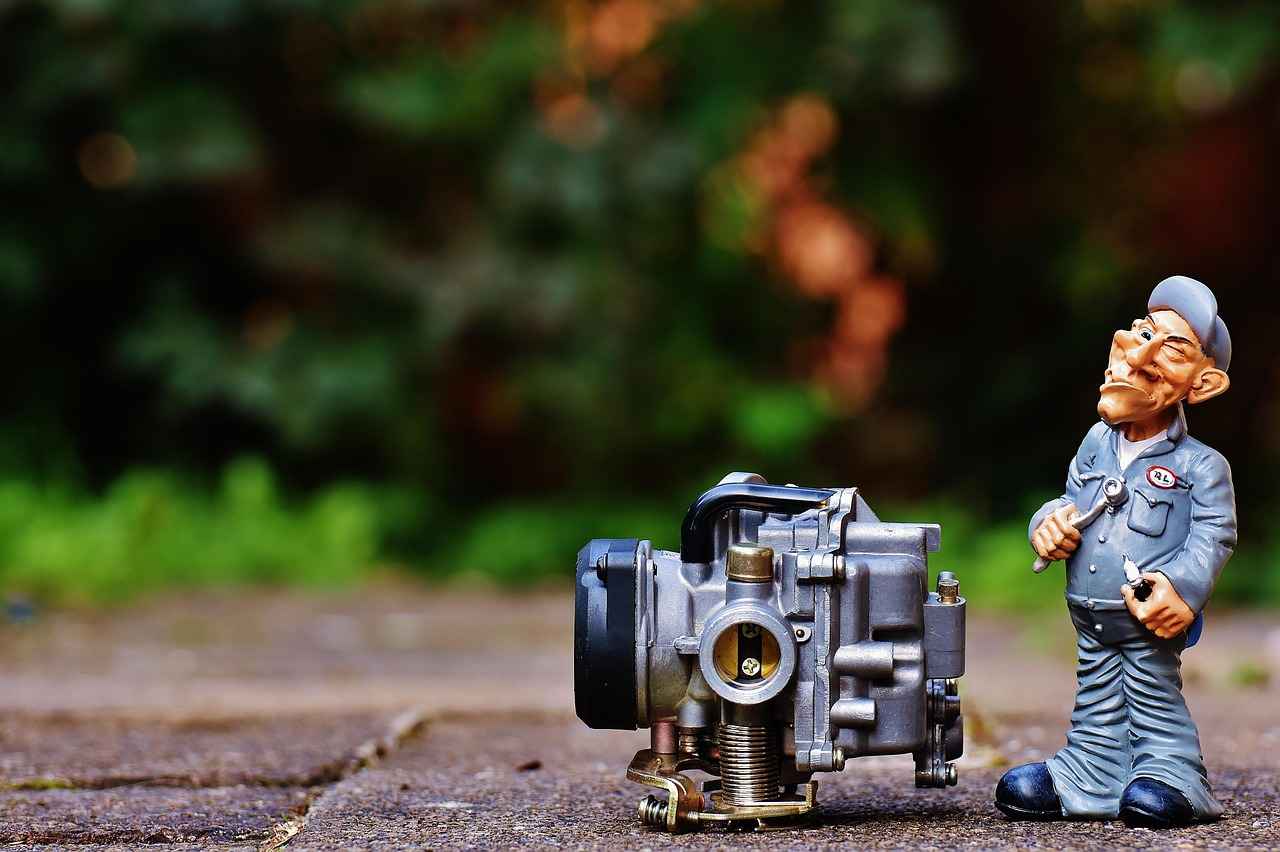
Step-by-Step Process to Rebuild Your Quadrajet Carburetor
Rebuilding a Quadrajet carburetor can seem daunting, but with the right guidance, it can be a rewarding project that enhances your vehicle’s performance. This step-by-step process will walk you through the essential stages of rebuilding your Quadrajet carburetor, ensuring you achieve optimal results.
Before diving into the rebuild, it’s crucial to have the right tools and materials at your disposal. Here’s a list of what you will need:
- Basic Hand Tools: Screwdrivers, wrenches, and pliers are essential for disassembly.
- Specialized Tools: A carburetor rebuild kit, vacuum gauge, and torque wrench will help ensure precision.
- Cleaning Supplies: Carburetor cleaner, brushes, and rags to clean all components thoroughly.
Begin the disassembly process by carefully removing the carburetor from the engine. Make sure to label all parts and take pictures if necessary to aid in reassembly. Follow these steps:
- Remove the air cleaner and disconnect the throttle linkage.
- Carefully detach the carburetor from the intake manifold.
- Open the carburetor and remove the float bowl, jets, and metering rods.
Once disassembled, thoroughly clean all components. Use carburetor cleaner and brushes to remove any deposits or dirt. Inspect each part for wear and damage:
- Check Gaskets: Look for cracks or tears.
- Inspect Jets: Ensure they are not clogged.
- Examine the Float: Make sure it is not leaking and operates smoothly.
Using your carburetor rebuild kit, replace any worn or damaged components. This typically includes gaskets, O-rings, and sometimes jets. Make sure to follow the kit instructions carefully to ensure proper installation.
With all parts cleaned and replaced, it’s time to reassemble the carburetor. Follow these steps:
- Start by reinstalling the float and float bowl.
- Carefully place the jets and metering rods back into their respective positions.
- Ensure all screws and bolts are tightened to the recommended torque specifications.
After reassembly, make the necessary adjustments to ensure optimal performance:
- Adjust Idle Speed: Set the idle speed according to your vehicle’s specifications.
- Mixing Ratio: Tune the air-fuel mixture for peak efficiency.
Finally, it’s essential to test the rebuilt carburetor to ensure it operates correctly:
- Reinstall the carburetor onto the engine and connect all linkages.
- Start the engine and let it warm up.
- Monitor for any leaks and listen for irregular sounds.
By following this detailed guide, you can successfully rebuild your Quadrajet carburetor and restore your vehicle’s performance. Remember, patience and attention to detail are key to achieving the best results!
Disassembling the Carburetor
Disassembling a carburetor is a critical first step in the rebuilding process. This task requires careful attention to detail to ensure that no components are damaged during removal. Below are the essential techniques and tips to help you navigate this process effectively.
Understanding the significance of proper disassembly is crucial. Improper techniques can lead to damage of delicate parts, resulting in costly repairs or replacements. By following the right procedures, you can maintain the integrity of the carburetor and ensure a successful rebuild.
- Screwdrivers: Both flathead and Phillips screwdrivers are necessary for removing screws.
- Wrenches: A set of wrenches will help you loosen nuts and bolts.
- Vacuum Gauge: This tool can assist in diagnosing issues during the rebuild.
- Clean Cloths: Use these to wipe down parts and avoid contamination.
- Preparation: Begin by ensuring your workspace is clean and organized. Gather all necessary tools and components.
- Remove the Carburetor: Carefully detach the carburetor from the engine. Take note of the orientation and position of all connections.
- Take Photos: As you disassemble, take photos of each step. This will serve as a reference for reassembly.
- Remove the Top Section: Unscrew the top of the carburetor gently. Be cautious of any springs or gaskets that may be under tension.
- Detach the Float and Needle: Carefully lift out the float and needle assembly. Inspect these parts for wear or damage.
- Remove Jets and Other Components: Use the appropriate screwdriver or wrench to remove jets and other components. Keep track of all small parts in a container.
While disassembling the carburetor, be mindful of the following common mistakes:
- Forcing Components: Never force parts apart; this can cause breakage.
- Ignoring Orientation: Failing to note the orientation of components can lead to assembly errors.
- Neglecting Inspection: Skipping the inspection of parts during disassembly can result in overlooking critical wear.
Once disassembly is complete, the next step is to clean and inspect each component thoroughly. This process is vital for identifying any parts that need replacement and ensuring that the carburetor functions optimally after reassembly.
In summary, disassembling a carburetor requires a methodical approach and a careful hand. By following the techniques outlined above, you can ensure that your rebuilding process goes smoothly, setting the stage for a successful restoration of your Quadrajet carburetor.
Cleaning and Inspecting Components
When it comes to rebuilding a Quadrajet carburetor, cleaning and inspecting components are two of the most critical steps. A thorough cleaning ensures that all parts are free from dirt, grime, and fuel residue, while a detailed inspection helps identify any wear or damage that could affect performance. This section will delve into effective cleaning methods and key inspection points to consider.
Cleaning is essential because contaminants can lead to poor fuel flow, clogged jets, and overall inefficient operation. By ensuring all components are spotless, you set the stage for a successful rebuild.
- Soaking in Carburetor Cleaner: One of the most effective methods is soaking the components in a high-quality carburetor cleaner. This helps dissolve built-up deposits and makes scrubbing easier.
- Ultrasonic Cleaning: For a deep clean, consider using an ultrasonic cleaner. This method uses high-frequency sound waves to agitate a cleaning solution, reaching even the smallest crevices.
- Brushing and Scrubbing: After soaking, use a soft brush to gently scrub parts, ensuring you remove any remaining residue. Pay special attention to the jets and passages, as they are crucial for proper fuel delivery.
- Rinsing and Drying: Rinse all components thoroughly with clean water to remove any cleaning solution. Allow them to dry completely before reassembly to prevent moisture-related issues.
After cleaning, it’s vital to inspect each component carefully. Here are key areas to focus on:
- Gaskets and Seals: Check for any signs of wear, cracks, or tears. Worn gaskets can lead to fuel leaks and affect performance.
- Float and Needle Valve: Inspect the float for any cracks or leaks. Ensure the needle valve moves freely and seals properly when closed.
- Throttle Plates: Ensure the throttle plates open and close smoothly without binding. Any misalignment can cause idle issues or poor acceleration.
- Jets and Passages: Look for clogs or damage. Use a fine wire to clear any obstructions, but be cautious not to enlarge the openings.
During inspection, be on the lookout for signs of damage that may necessitate replacement:
- Corrosion: Any signs of rust or corrosion can indicate that a part is beyond cleaning and should be replaced.
- Wear Patterns: Look for unusual wear patterns on moving parts, which could indicate misalignment or other issues.
- Cracks or Breaks: Any visible cracks or breaks in components like the carburetor body or float should be addressed immediately.
In summary, thorough cleaning and inspection of all components are not just beneficial but essential for a successful Quadrajet carburetor rebuild. By employing effective cleaning methods and being vigilant during inspection, you can greatly enhance the performance and longevity of your carburetor. Remember, taking the time to do it right now can save you from future headaches and ensure your vehicle runs smoothly.
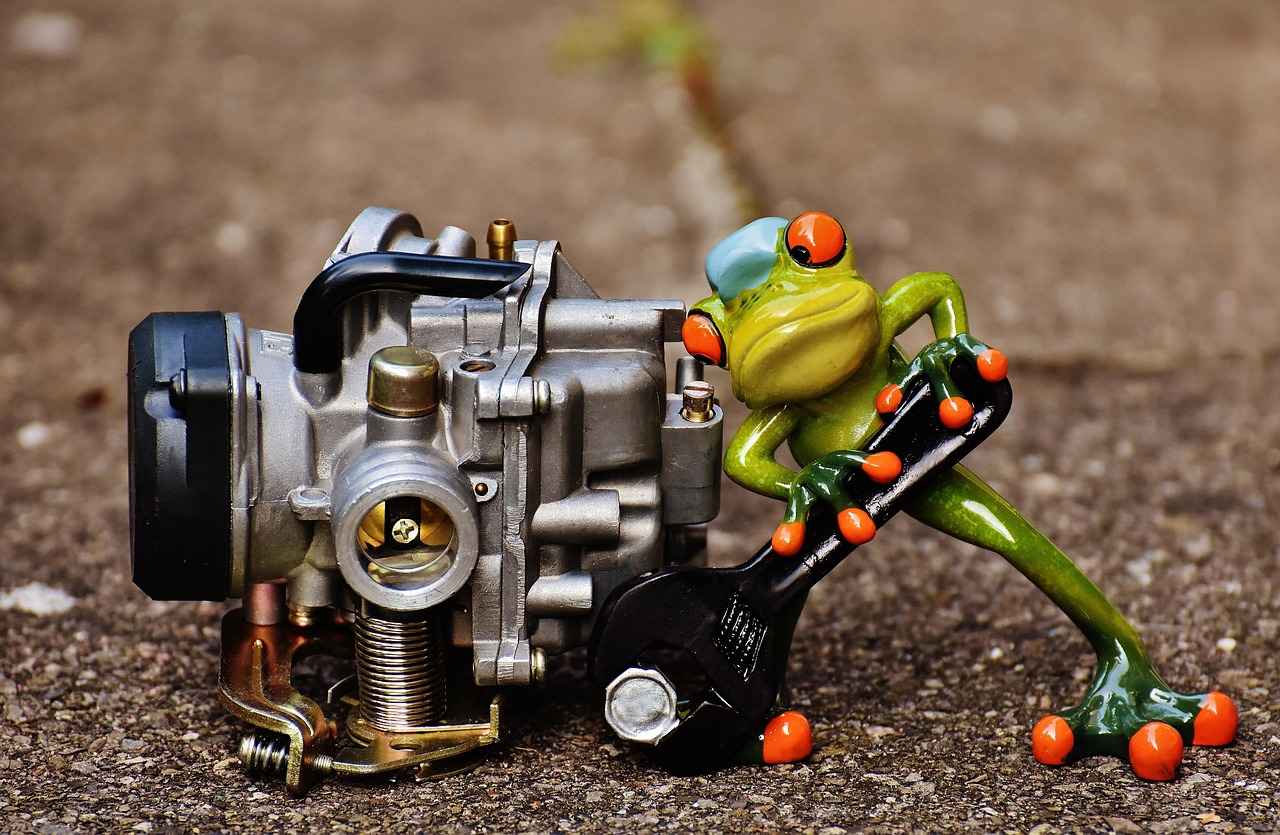
Final Adjustments and Testing Your Rebuilt Carburetor
After successfully rebuilding your Quadrajet carburetor, the next crucial steps involve making final adjustments and conducting thorough testing. These procedures are vital to ensure that your carburetor operates at its best, delivering optimal performance and efficiency. This section will guide you through the necessary adjustments and testing protocols.
Final adjustments are essential for several reasons:
- Performance Optimization: Ensuring that the carburetor delivers the right air-fuel mixture enhances engine performance.
- Fuel Efficiency: Proper adjustments can lead to better fuel economy, reducing costs over time.
- Engine Longevity: Correct settings help prevent wear and tear on engine components, extending their lifespan.
Adjusting the idle and mixture settings is a fundamental step in the final adjustment process. Follow these steps:
- Start the Engine: Begin by starting your engine and allowing it to reach its normal operating temperature.
- Set Idle Speed: Locate the idle adjustment screw and turn it to set the idle speed to the manufacturer’s recommended RPM.
- Adjust Mixture: Use a vacuum gauge to monitor the engine’s performance as you adjust the mixture screw until you achieve the highest stable vacuum reading.
Once adjustments are made, testing is crucial to verify that everything is functioning correctly. Here’s how to conduct effective tests:
- Road Test: Take your vehicle for a test drive. Pay attention to acceleration, smoothness, and responsiveness.
- Check for Leaks: Inspect the carburetor and surrounding areas for any signs of fuel leaks, which can indicate improper sealing.
- Monitor Fuel Consumption: Keep track of fuel usage over several trips to assess efficiency improvements.
Even after careful adjustments, you may encounter issues. Here are some common problems and their solutions:
| Issue | Possible Causes | Solutions |
|---|---|---|
| Rough Idle | Incorrect mixture settings | Re-adjust the mixture screw |
| Poor Acceleration | Clogged jets or incorrect adjustments | Clean jets and recheck settings |
| Fuel Leaks | Worn gaskets or seals | Replace gaskets and seals |
In conclusion, making final adjustments and testing your rebuilt Quadrajet carburetor is a critical phase that ensures its reliability and efficiency. By carefully adjusting the idle and mixture settings, along with thorough testing, you can achieve optimal performance and prolong the life of your engine.
Adjusting Idle and Mixture Settings
Adjusting the idle and mixture settings of your Quadrajet carburetor is essential for achieving optimal engine performance. These adjustments not only enhance drivability but also improve fuel efficiency and reduce emissions. This section will provide you with a detailed guide on how to perform these adjustments accurately, ensuring your carburetor operates at its best.
The idle speed and air-fuel mixture settings directly influence how your engine runs when not under load. Proper adjustments can lead to smooth idling, improved throttle response, and overall better performance. If these settings are incorrect, you may experience issues such as rough idling, stalling, or excessive fuel consumption.
- Screwdriver Set – For adjusting screws on the carburetor.
- Vacuum Gauge – To measure the vacuum level and help fine-tune the mixture.
- Tachometer – To accurately monitor the engine’s idle speed.
- Basic Hand Tools – Wrenches and pliers for any necessary adjustments.
Follow these steps to accurately adjust the idle and mixture settings of your Quadrajet carburetor:
- Warm Up the Engine: Before making any adjustments, ensure your engine is at operating temperature. This allows for accurate readings and adjustments.
- Set the Idle Speed: Locate the idle speed screw on your carburetor. Using a tachometer, turn the screw clockwise to increase the idle speed or counterclockwise to decrease it. Aim for the manufacturer’s recommended RPM, typically between 600 and 800 RPM for most vehicles.
- Adjust the Mixture Settings: Next, locate the mixture screws. Start by turning them in (clockwise) until they lightly seat, then back them out 1.5 turns as a baseline. With the engine running, adjust each screw in small increments (1/8 turn) while monitoring the engine’s RPM. The goal is to find the point where the RPM peaks, indicating the optimal air-fuel mixture.
- Fine-Tune the Idle Speed: After adjusting the mixture, return to the idle speed screw and re-check the RPM. Make any necessary adjustments to ensure the engine idles smoothly.
- Test Drive: Finally, take your vehicle for a short drive. Pay attention to how it accelerates and idles. If you notice any issues, repeat the adjustment process as needed.
- Over-tightening Screws: Be cautious not to overtighten the mixture screws, as this can damage the carburetor.
- Ignoring Engine Temperature: Always make adjustments with the engine at the correct operating temperature for the most accurate results.
- Neglecting Other Components: Ensure that other components of the carburetor and engine are in good condition, as issues elsewhere can affect idle and mixture performance.
In conclusion, correctly adjusting the idle and mixture settings of your Quadrajet carburetor is vital for optimal performance. By following the steps outlined above and avoiding common mistakes, you can ensure your engine runs smoothly and efficiently. Regular maintenance and attention to these settings will contribute to the longevity of your carburetor and overall engine health.
Testing for Performance and Efficiency
After you have successfully rebuilt your Quadrajet carburetor, is crucial to ensure that it operates at its best. This process not only verifies that your rebuild was successful but also helps identify any adjustments that may be necessary for optimal functionality.
Testing your rebuilt carburetor is essential for several reasons:
- Ensures Proper Functionality: A thorough test will reveal whether the carburetor is functioning as intended.
- Identifies Adjustments Needed: It allows you to pinpoint any areas that require fine-tuning to enhance performance.
- Prevents Future Issues: Early detection of problems can save you from more significant issues down the line.
To effectively assess the performance of your rebuilt Quadrajet carburetor, follow these steps:
- Visual Inspection: Start with a visual inspection for any fuel leaks or loose connections. Ensure that all components are securely fastened.
- Idle Testing: With the engine running, observe the idle speed. Adjust the idle screw if necessary to achieve the recommended RPM.
- Acceleration Test: Take the vehicle for a test drive. Pay attention to the responsiveness of the throttle. The vehicle should accelerate smoothly without hesitation.
- Fuel Efficiency Check: Monitor your fuel consumption over a set distance. This will help you determine if the carburetor is delivering the right air-fuel mixture.
If your testing reveals that adjustments are needed, consider the following:
- Adjusting the Mixture Screws: If the engine runs too rich or too lean, fine-tuning the mixture screws can help achieve the right balance.
- Idle Speed Adjustment: If the idle is too high or too low, adjust the idle speed screw accordingly.
- Check for Clogged Jets: If performance issues persist, inspect the jets for clogs and clean or replace them as needed.
Utilizing diagnostic tools can enhance your testing process:
- Vacuum Gauge: A vacuum gauge can help you assess engine performance and pinpoint issues related to air-fuel mixture.
- Wideband O2 Sensor: This tool provides real-time data on the air-fuel ratio, allowing for precise adjustments.
In conclusion, testing your rebuilt Quadrajet carburetor is a vital step that ensures your vehicle performs optimally. By following the outlined procedures and making necessary adjustments, you can enjoy improved performance and efficiency, ensuring your investment in the rebuild pays off.
Frequently Asked Questions
- What tools do I need to rebuild a Quadrajet carburetor?
To successfully rebuild a Quadrajet carburetor, you’ll need basic hand tools like screwdrivers and wrenches, as well as specialized tools such as a carburetor rebuild kit and a vacuum gauge for precision work.
- How can I tell if my Quadrajet carburetor needs rebuilding?
Signs that your Quadrajet may need rebuilding include fuel leaks, poor acceleration, and rough idling. If you notice any of these issues, it’s a good idea to assess the carburetor for potential rebuild.
- What are the common problems associated with Quadrajet carburetors?
Common issues include fuel leaks caused by worn gaskets, clogged jets leading to poor acceleration, and improper adjustments that result in rough idling. Identifying these problems early can save you time and hassle.
- Is it difficult to rebuild a Quadrajet carburetor?
While it may seem daunting, rebuilding a Quadrajet carburetor is manageable with the right tools and guidance. Following a step-by-step process can make the task easier and more rewarding.
- How do I make final adjustments to my rebuilt carburetor?
Final adjustments involve tuning the idle and mixture settings to ensure optimal performance. Testing the carburetor after installation will help you fine-tune these settings for the best results.


